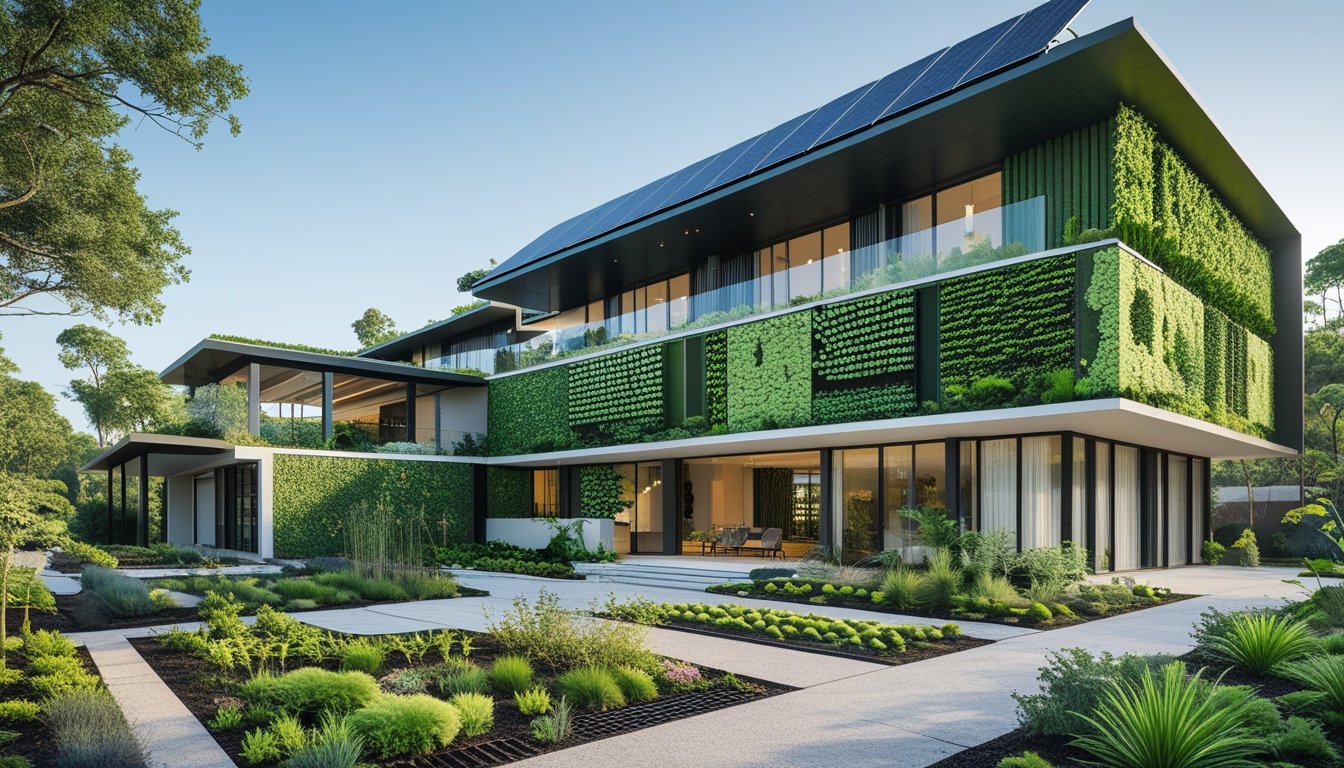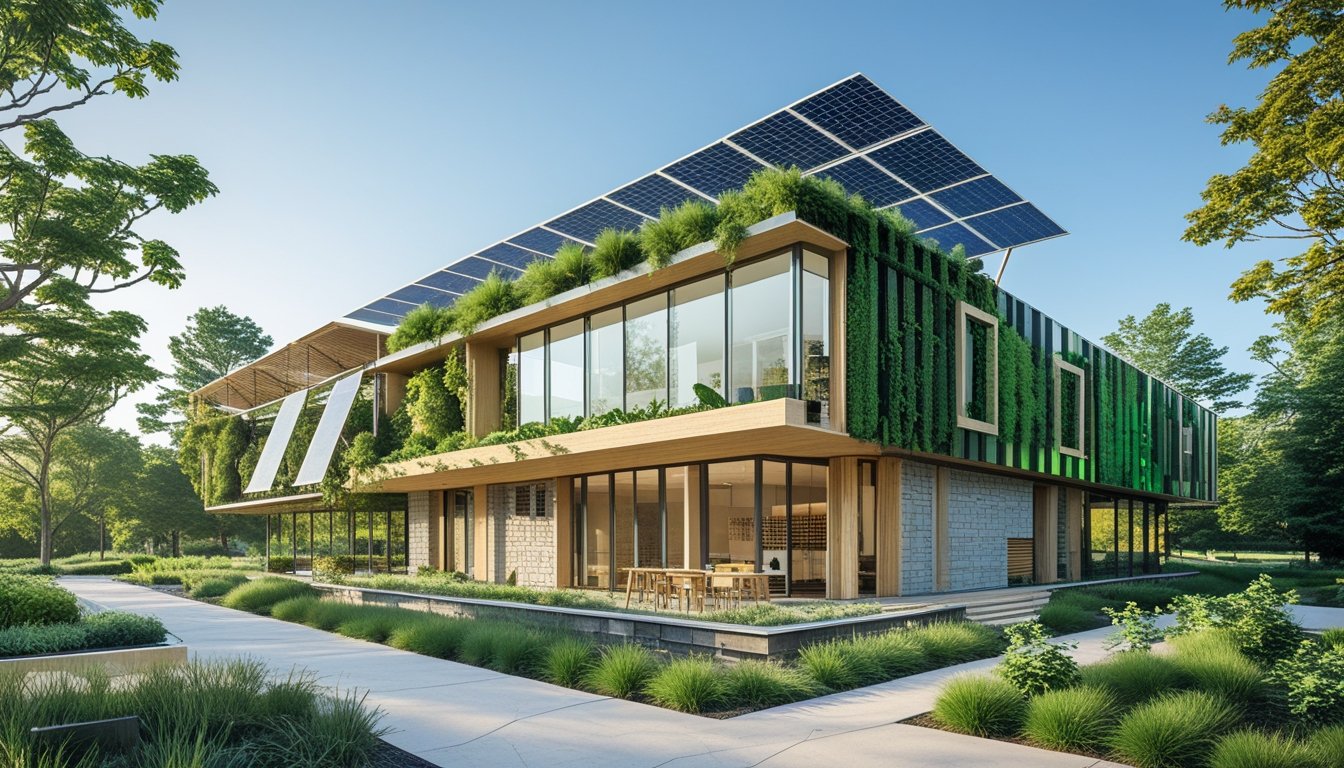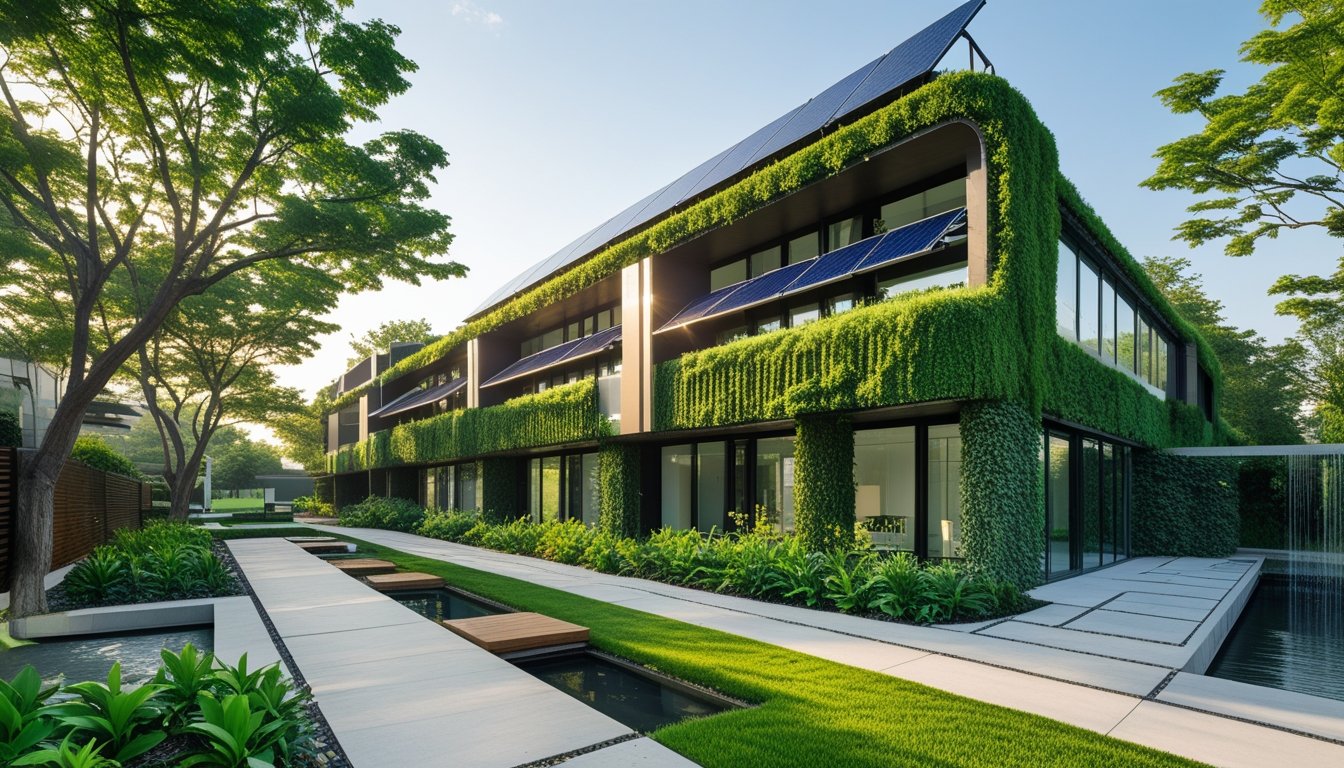Late updated: 22 Nov 2025 09:11
Written by: Ella Thompson
Innovative Green Architecture for Sustainable Living: Revolutionising Urban Spaces
The era of innovative green architecture is upon us, reshaping the world around us with an emphasis on sustainability and ecological responsibility. This architectural approach integrates eco-friendly materials, energy-efficient designs, and renewable resources to craft spaces that harmonise with the environment. Innovative green architecture not only minimises environmental impact but also promotes healthier and more economically sustainable living.

Our built environment reflects a dynamic shift towards designs that cater to both aesthetic beauty and functional efficiency. Incorporating elements such as green façades, passive energy systems, and biophilic design allows urban and residential projects to enhance quality of life while reducing the carbon footprint. These strategies employ forward-thinking materials like reclaimed wood and recycled steel to push the boundaries of traditional architecture.
We embark on an exploration of inspiring projects from around the globe that exemplify these principles. By showcasing these groundbreaking examples, we invite you to rethink the role of architecture in shaping our future, encouraging a more sustainable coexistence with our planet.
Key Takeaways
- Innovative green architecture promotes sustainability and eco-friendly practices.
- Utilising renewable materials and energy-efficient designs enhances quality of life.
- Examples from around the world inspire sustainable architectural transformations.
Core Principles of Innovative Green Architecture
In crafting structures that prioritise the environment, architects focus on selecting materials that reduce waste and promote long-term sustainability. Energy-saving techniques and effective resource use are essential to maintaining a low environmental impact.
Eco-Friendly and Renewable Materials
The use of eco-friendly and renewable materials is at the heart of green architecture. We often see bamboo, reclaimed wood, and recycled steel as prime choices for their sustainability. Bamboo grows rapidly and requires minimal resources, making it a versatile and eco-conscious option for construction. Reclaimed wood not only lessens the demand for new timber but also adds unique character to buildings with its varied textures. Meanwhile, recycled steel offers remarkable durability and strength, significantly reducing energy consumption compared to new steel production. By integrating these materials, architects can drastically cut down on waste and carbon emissions, ensuring that each building contributes positively to the environment.
Energy Efficiency and Low-Impact Design
Maximising energy efficiency is crucial in lowering a building's footprint. We incorporate passive design strategies such as natural ventilation and daylighting to minimise reliance on artificial climate control and lighting systems. Structures are oriented to take advantage of natural light, which not only cuts down on energy use but enhances occupants' well-being. Energy-efficient designs, which include well-insulated walls and windows, further support this goal by helping maintain consistent internal temperatures. These elements work collectively to ensure that our buildings not only consume less energy during operation but also provide a more comfortable and sustainable living environment.
Water Conservation and Resource Management
In green architecture, water conservation is a top priority. We employ rainwater harvesting systems to collect and reuse rainwater, providing a sustainable water source for non-potable uses like irrigation and flushing toilets. By managing water resources efficiently, we significantly decrease the demand on municipal water supplies. Additionally, implementing efficient plumbing fixtures and utilising waste-to-energy plants seamlessly integrates water-saving measures into the overall resource management plan. These efforts ensure that we make the most of available resources and actively reduce water wastage, promoting an environmentally responsible approach to building design.
Innovative Strategies and Exemplary Projects

In exploring sustainable architecture, we encounter diverse strategies aimed at environmentally sound living solutions. These include the integration of natural elements into urban environments, the application of smart technologies for better energy use, and examples of landmark projects that set the benchmark in sustainable design.
Green Roofs, Living Walls, and Urban Biodiversity
Green roofs and living walls, also known as vertical gardens, are becoming integral parts of urban architecture. These features not only enhance the aesthetic appeal of buildings but also play a crucial role in boosting urban biodiversity. By providing habitats for various species, they contribute to the ecological richness of cityscapes.
Implementing green roofs can reduce the urban heat island effect, helping regulate building temperatures naturally. The Bosco Verticale in Milan exemplifies this idea by transforming tower blocks into vertical forests, which effectively improve air quality. Including vegetation in urban planning can lead to significant improvements in indoor air quality and overall environmental health.
Smart Technologies and Energy Management
Smart technologies are revolutionising energy management in buildings. Integrating high-performance windows and energy-efficient LED lighting systems minimises power use. Smart systems that optimise building orientation further enhance energy savings by leveraging natural light and efficient solar panel placement.
Innovative buildings often incorporate photovoltaic panels for clean energy generation. Structures like the Bullitt Center showcase how net-zero energy designs can sustain themselves entirely through renewable sources. These eco-friendly buildings not only diminish carbon footprints but can also offer tangible economic benefits through tax credits and reduced energy costs.
Notable Case Studies in Sustainable Living
Some architectural projects stand out for their pioneering sustainable strategies. The Bullitt Center in Seattle is a prime example, combining leed certification standards with energy efficiency and durable materials like rammed earth. Its design prioritises indoor environmental quality and passive energy strategies.
Another remarkable project is Bosco Verticale, which successfully blends vertical gardens with dense urban living to enhance air quality and urban aesthetics. The design aids in reducing pollution and providing sustainable construction solutions that maintain harmony with nature. These innovative projects illustrate how sustainable building practices can lead to resilient urban environments able to withstand the challenges of climate change and urbanisation.
Frequently Asked Questions

In this section, we address some of the most common queries regarding sustainable architecture. These questions cover essential principles, material choices, health benefits, and more.
What are the key principles of sustainable architecture?
Sustainable architecture focuses on reducing environmental impact through energy efficiency, resource conservation, and waste reduction. It prioritises the use of renewable energy, passive design techniques, and sustainable construction practices to create eco-friendly structures.
How does green building contribute to energy efficiency?
Green buildings are designed to maximise natural light and ventilation, reducing the need for artificial lighting and air conditioning. By incorporating energy-efficient systems and appliances, they significantly reduce energy consumption, resulting in lower utility bills and a smaller carbon footprint.
What are some common materials used in eco-friendly construction?
Eco-friendly construction often utilises materials such as bamboo, reclaimed wood, and recycled steel. These materials are not only sustainable but also durable and aesthetically pleasing, providing a greener alternative to traditional building components.
Can sustainable architecture improve health and well-being?
Yes, sustainable architecture can enhance indoor air quality and provide better thermal comfort, leading to improved occupant health and well-being. Features like green roofs and biophilic designs connect occupants with nature, reducing stress and promoting a healthier living environment.
How does landscaping integrate with sustainable architectural design?
Landscaping is an integral part of sustainable design, providing insulation, reducing urban heat, and supporting biodiversity. By incorporating native plants and green spaces, we can create harmonious environments that complement and enhance eco-friendly buildings.
What are the long-term benefits of investing in green architecture?
Investing in green architecture offers long-term savings through reduced energy costs and maintenance expenses. Additionally, sustainable buildings often have higher property values and can contribute to achieving environmental certifications, enhancing their marketability and appeal.
